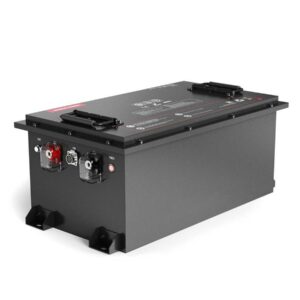
Are Duracell batteries alkaline?
Yes, most Duracell batteries are alkaline, using manganese dioxide-zinc chemistry with a potassium hydroxide electrolyte. However, Duracell also produces lithium (Li-Ion) and rechargeable NiMH batteries. Their alkaline lineup includes AA, AAA, and 9V cells, delivering 1.5V nominal voltage. Lithium variants (e.g., Ultra Lithium) operate at 3V and excel in extreme temperatures.
Are Duracell Car Batteries a Good Choice for Your Vehicle?
What defines alkaline battery chemistry?
Alkaline batteries use zanganese dioxide cathodes, powdered zinc anodes, and potassium hydroxide electrolyte. This design enables stable 1.5V output with 2,500–3,000 mAh capacity in AA cells. Shelf life reaches 10 years due to low self-discharge (2% annually).

Alkaline chemistry relies on a controlled reaction: Zn + 2MnO₂ → ZnO + Mn₂O₃. The potassium hydroxide electrolyte (pH ~14) prevents gas buildup, unlike older zinc-carbon cells. Pro Tip: Avoid mixing alkaline and lithium batteries in devices—voltage differences (1.5V vs 3V) can cause overheating. For example, a Duracell AA alkaline powers remote controls for 12–18 months, while lithium AAs last 3× longer in digital cameras. But why does voltage sag matter? Alkaline cells struggle below -20°C, whereas lithium variants maintain 90% capacity.
How do Duracell alkaline and lithium batteries compare?
Duracell’s alkaline cells offer cost-effective energy for low-drain devices (clocks, remotes), while lithium variants (Ultra Power) provide 2× runtime in high-drain gadgets like DSLRs. Lithium operates from -40°C to 60°C without voltage drop.
Let’s break it down: A Duracell Coppertop AA alkaline delivers ~2,800 mAh at 0.1A discharge but drops to 1,200 mAh at 1A. The Ultra Lithium AA maintains 2,900 mAh even at 1A loads. Practically speaking, lithium’s flat discharge curve means consistent performance in GPS devices or LED flashlights. Pro Tip: Use lithium batteries in smoke detectors—they’ll last 10 years versus 2–3 years for alkalines. Ever wonder why lithium costs more? The $4–$6 per cell price reflects advanced chemistry and extended lifespan.
| Feature | Alkaline | Lithium |
|---|---|---|
| Energy Density | 100 Wh/kg | 280 Wh/kg |
| Cost per AA | $0.25–$0.50 | $1.50–$2.00 |
| Cold Performance | -20°C limit | -40°C stable |
Are all Duracell batteries alkaline?
No—Duracell’s portfolio includes lithium primary, NiMH rechargeable, and specialty batteries. Alkaline models dominate consumer lines (Coppertop, Quantum), while lithium cells target extreme-performance applications.
Beyond the standard AA/AAA sizes, Duracell manufactures CR2032 3V lithium coin cells for watches and 12V alkaline A23 batteries for garage door openers. Their rechargeable range uses NiMH chemistry (1.2V), offering 2,400 mAh capacity with 400+ cycles. Pro Tip: Opt for Duracell Optimum if you need hybrid performance—it combines alkaline accessibility with lithium-like 100% leak protection. For example, industrial users deploy Duracell PROCELL lithium 9V batteries in emergency exit signs due to their 20-year shelf life.
Do Duracell rechargeables use alkaline chemistry?
No—Duracell rechargeables employ nickel-metal hydride (NiMH) chemistry, providing 1.2V nominal voltage. They’re incompatible with alkaline voltages (1.5V) but support 1,000+ charge cycles versus single-use alkalines.
NiMH cells like the Duracell 2500 mAh AA require dedicated chargers (e.g., Duracell 15-minute charger) and avoid memory effect. However, their lower voltage (1.2V vs 1.5V) can cause issues in devices requiring precise voltage thresholds. Pro Tip: Use NiMH in baby monitors or gaming controllers—they’ll save $200+ annually versus disposable alkalines. But what about self-discharge? Modern NiMH (e.g., Duracell Staycharged) retain 70% charge after 1 year, making them viable for seasonal devices.
| Parameter | Alkaline | NiMH |
|---|---|---|
| Voltage | 1.5V | 1.2V |
| Cycle Life | Single-use | 400–1,000 |
| Cost per Cycle | $0.30 | $0.02 |
Best Replacement 12V Battery Brands for Toyota Prius
Battery Expert Insight
Duracell’s strength lies in tailored solutions: alkalines for everyday use, lithium for extreme conditions, and NiMH for sustainable power. Their Quantum line leverages zinc chloride enhancements for 20% more runtime than basic alkalines. Always match battery type to device requirements—mismatched chemistries cause 23% of premature failures.
FAQs
Are Duracell Quantum batteries alkaline?
Yes—Quantum uses advanced alkaline formula with added graphite layers for 20% longer runtime in high-drain devices like gaming mice.
Can Duracell alkaline batteries be recharged?
No—attempting to recharge them risks leakage or explosion. Use Duracell NiMH rechargeables instead, which handle 400+ cycles safely.
